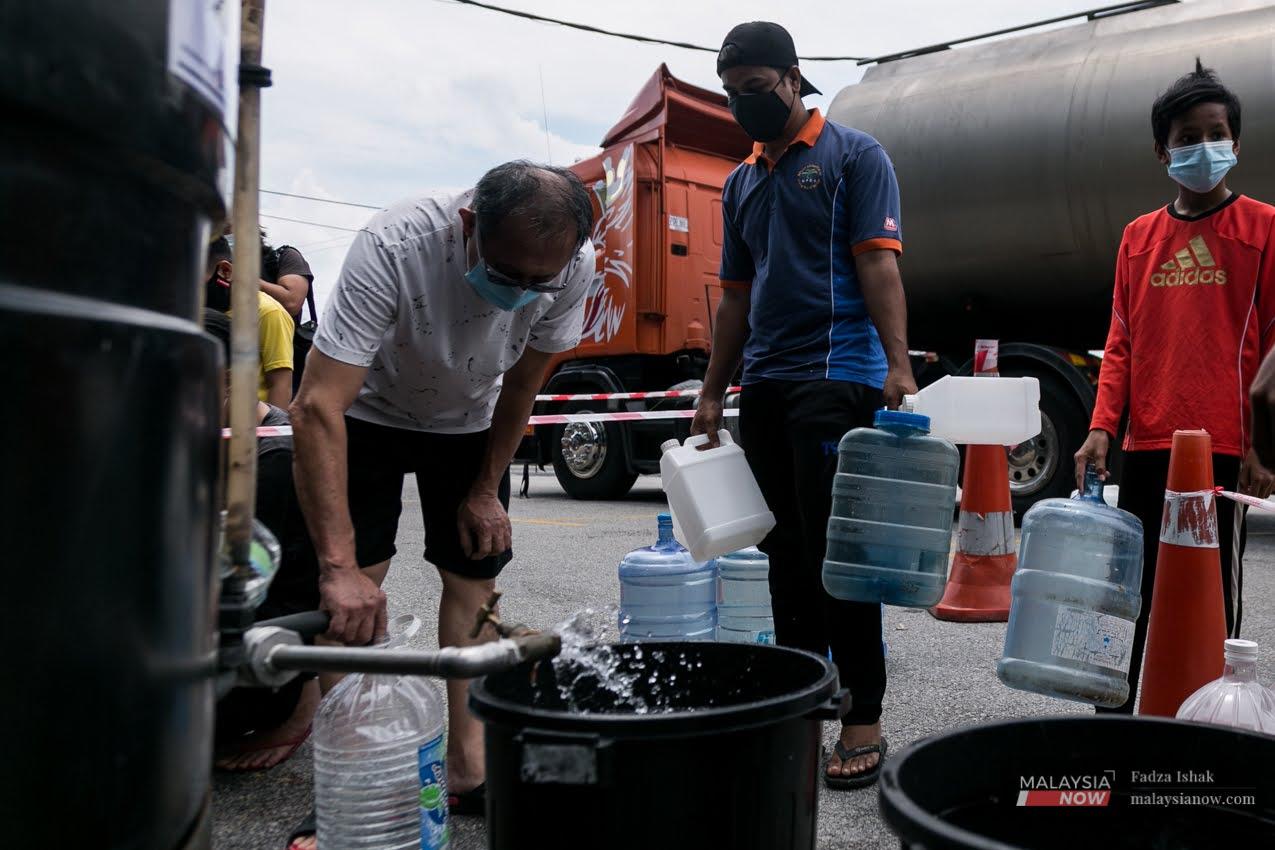Long, winding road to solving Selangor’s water crisis
There may be no quick fix to the seemingly never-ending disruptions to water supply plaguing the state.
Just In
The Covid-19 pandemic has raised discussions on Malaysia’s long-term problem with water cuts and river pollution, with politicians offering little to no solutions to the lingering issue.
Pictures of Selangor residents gathering around tankers owned by Air Selangor, the sole water provider in the region, recently went viral on social media as the disruption in water supply forced the residents to collect water directly from the tanker despite the many phases of the movement control order.
Such a problem, however, is not exclusive to people in Selangor. Thanks to the rapid development across the country, the National Water Services Commission (SPAN) recorded that water consumption per capita in Peninsular Malaysia and Labuan had reached 230 litres per capita per day (LCD) in 2019, turning Malaysia into the country with highest water usage in Southeast Asia. Around 60% of the volume was used in domestic households.
The figure was also above the recommended threshold by the World Health Organization (WHO) of 150 LCD.
The commission also recorded that the reserve margin – the difference between the water treatment plants’ production capacity and clean water usage – was at 12.7% in 2018, the lowest since 2008.
While residents despise private water suppliers for the disruptions, they don’t have many choices as political negotiations for potential solutions to the water supply and sanitation problem are often jeopardised.
A Dewan Rakyat session on Nov 3 was dominated by talk of Selangor’s water crisis. One of the key points from the session was the environment and water ministry’s statement on attempts to increase reserve water capacity in case of emergencies.
The ministry also said that it had increased inspections of factories to ensure the safe disposal of industrial waste. It added that the ministry would support amendments in prevailing regulations for harsher penalties for chemical waste dumping.
While the negotiations stalled, residents kept facing problems as Air Selangor recently announced another round of unscheduled water cuts, affecting the majority of the Klang Valley area.
Some have also highlighted the problem of chemical waste dumping to Sungai Kim Kim in Pasir Gudang. Roughly 6,000 people, most of whom were school students, became sick from the toxic fumes and were hospitalised for breathing difficulties.
With authorities still looking for a solution, cleaning the river would cost much as there is little effort to prevent new pollution sources from discharging waste into the river.
Charles Santiago, a Klang MP and former SPAN chairman, has suggested some quick reforms to prevent the never-ending chemical waste dumping by “set[ing]-up a National River Protection Authority with immediate effect”.
“The outfit must then create a buffer of 300 to 400 metres (inland) where business activities should not be allowed. Police and other enforcement authorities could supervise the place with the help of CCTV and other technologies,” Santiago said.
He added that authorities should look at long-term reforms on water conservation and demand management to increase clean water supply, rather than merely focusing on infrastructure approach.
Malaysia often seeks to remedy the situation through infrastructure-driven solutions – for example, the Sungai Selangor Dam project increasing the supply of water. This approach, however, couldn’t keep up with the ever-growing demand for clean water.
The country has actually already worked on several measures to fix the problem – for example, small-scale water conservation and regulations that encourage industries to label themselves under the Water-Efficient Products Labelling Scheme.
Many saw that stricter programmes would be necessary to monitor and control pollution discharges as part of the country’s efforts to promote a just and green transition.
However, Institute for Democracy and Economic Affairs (IDEAS) CEO Tricia Yeoh said it wouldn’t be easy to carry out quick reforms to fix the problem, especially in Selangor, due to the unclear relationship between the state administration and federal government.
“Regulating water services falls under the Federal Constitution’s Concurrent List, where both federal and state governments have joint responsibilities,” she said.
“In the case of chemical pollution, multiple agencies and authorities – SPAN, Air Selangor, Lembaga Urus Air Selangor (LUAS) and the Selangor state government – require streamlined regulation and coordination.”
She added that the idea of setting up new agencies to address the water problem would seem unfeasible without the collaboration of federal and state bodies which are heavily influenced by political affiliations.
Yvonne Tan is part of Climate Tracker, an independent scientific analysis that tracks government climate action.
The views expressed in this article are those of the author(s) and do not necessarily reflect the position of MalaysiaNow.
Subscribe to our newsletter
To be updated with all the latest news and analyses daily.
